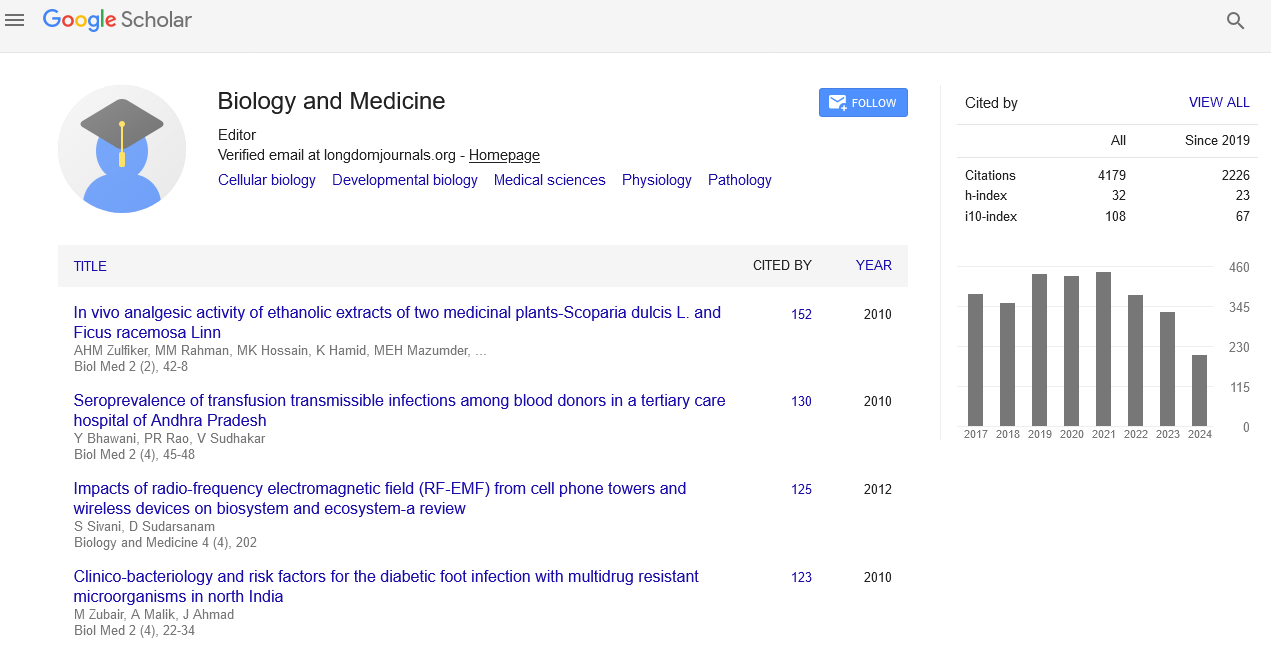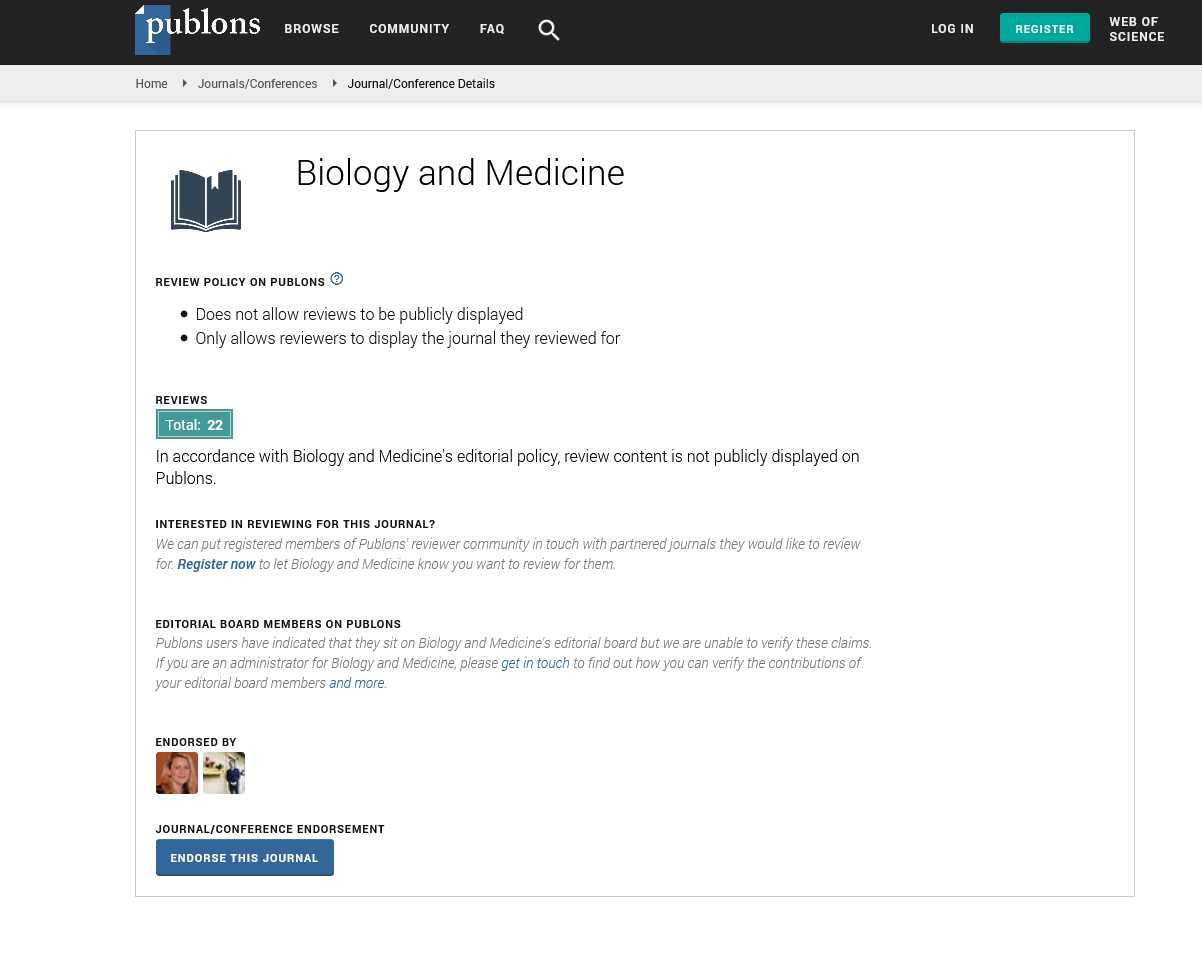Indexed In
- Open J Gate
- Genamics JournalSeek
- CiteFactor
- Cosmos IF
- Scimago
- Ulrich's Periodicals Directory
- Electronic Journals Library
- RefSeek
- Hamdard University
- EBSCO A-Z
- Directory of Abstract Indexing for Journals
- OCLC- WorldCat
- Proquest Summons
- Scholarsteer
- ROAD
- Virtual Library of Biology (vifabio)
- Publons
- Geneva Foundation for Medical Education and Research
- Google Scholar
Useful Links
Share This Page
Journal Flyer

Open Access Journals
- Agri and Aquaculture
- Biochemistry
- Bioinformatics & Systems Biology
- Business & Management
- Chemistry
- Clinical Sciences
- Engineering
- Food & Nutrition
- General Science
- Genetics & Molecular Biology
- Immunology & Microbiology
- Medical Sciences
- Neuroscience & Psychology
- Nursing & Health Care
- Pharmaceutical Sciences
Perspective - (2025) Volume 17, Issue 2
Senescence and Immortality: The Biology of Organisms That Donât Age
Fiona Norberg*Received: 12-Feb-2025, Manuscript No. BLM-25-28805; Editor assigned: 14-Feb-2025, Pre QC No. BLM-25-28805 (PQ); Reviewed: 28-Feb-2025, QC No. BLM-25-28805; Revised: 07-Mar-2025, Manuscript No. BLM-25-28805 (R); Published: 14-Mar-2025, DOI: 10.35248/0974-8369.25.17.778
Description
The question of why we age has intrigued scientists and philosophers alike for millennia. While aging and senescence appear to be universal in the biological world, certain organisms have been identified that challenge the traditional understanding of aging. These immortal organisms either exhibit negligible senescence or show the ability to regenerate and even potentially live indefinitely under certain conditions.
The study of such organisms, from the hydra to immortal jellyfish and tubeworms, has opened new avenues of research into the biological processes that drive aging and the possibility of biological immortality. These organisms offer a unique opportunity to better understand the molecular mechanisms that control cellular and tissue maintenance, regeneration, and the aging process itself.
This article will explore the mechanisms behind biological immortality and how insights from these organisms might offer strategies to delay aging or reverse age-related damage in humans.
One of the most well-known examples of an organism that does not exhibit senescence is the hydra. These simple, freshwater organisms possess a remarkable ability to regenerate damaged tissues and show little to no signs of aging. The secret to this apparent immortality lies in their stem cells.
Hydra have a population of interstitial stem cells that continuously divide and replace old cells, ensuring constant regeneration. This regeneration process is extremely efficient, allowing hydra to remain biologically youthful throughout their lives. Research into hydra has revealed that they possess mechanisms that maintain telomere length during cell division, a key factor in slowing down the aging process.
The immortal jellyfish has garnered widespread attention for its ability to revert its cells back to a more youthful state. This species has a unique life cycle where, when faced with stress or injury, it can reverse its maturation process and transform back into its juvenile form, a phenomenon known as transdifferentiation. By reverting to its polyp stage, it effectively avoids death from old age and starts a new cycle of life.
This process of cellular reprogramming in response to environmental triggers is an example of a biological reset. The ability to “age backward” offers fascinating insights into cellular plasticity and rejuvenation, highlighting potential applications for extending human lifespan and counteracting the effects of aging at a cellular level.
Planarian flatworms are known for their extraordinary regenerative abilities, allowing them to regenerate entire organs or even their entire bodies from just a small fragment. This regeneration is driven by a population of neoblasts, which are pluripotent stem cells capable of differentiating into any type of cell needed for tissue regeneration.
Interestingly, planarians are also considered to exhibit negligible senescence. Even as they age, their regenerative abilities remain intact, suggesting that the processes governing cellular renewal and maintenance can delay or eliminate the effects of aging. Studying the regenerative mechanisms in planarians could reveal new strategies for tissue repair and anti-aging therapies in humans.
The organisms that appear to be biologically immortal or exhibit negligible senescence share several common biological traits. These traits may hold the key to unlocking the secrets of aging and the potential for extending lifespan in other organisms, including humans. A common feature among immortal organisms is the presence of active stem cells that constantly renew tissues and organs. These organisms typically exhibit high levels of regenerative capacity, meaning that they can continually replace aged or damaged cells without suffering from the typical wear and tear seen in most species. Stem cell populations in these organisms are highly regulated, with mechanisms that prevent the usual decline in stem cell function that occurs during aging in most animals. By preserving the function of stem cells, these organisms maintain their ability to repair tissues throughout their lifespan.
One of the key factors in aging is the shortening of telomeres, the protective caps at the ends of chromosomes. As cells divide, telomeres shorten, eventually leading to cellular senescence or death. In some immortal organisms, such as hydra, telomere length is maintained over time, allowing for continuous cell division without the usual signs of aging. Some species, such as the immortal jellyfish, appear to have evolved mechanisms to reverse telomere shortening, effectively resetting the biological clock. The maintenance of telomeres is a crucial area of research, as telomere therapy has the potential to delay aging in humans and extend lifespan. The ability of certain organisms to undergo cellular reprogramming such as the immortal jellyfish’s transition from adult to juvenile suggests that cellular age can be reversed under certain conditions. This involves the reprogramming of cellular fate, essentially resetting the molecular machinery of aging.
While the prospect of biological immortality or extended lifespan is fascinating, it raises important ethical and societal questions. The possibility of significantly extending human life could lead to overpopulation, resource depletion, and shifts in societal structures. Additionally, the potential for designer longevity could create social inequalities, where only certain individuals have access to life-extending treatments.
Conclusion
There are also concerns regarding the safety of these interventions. The ability to reverse aging or rejuvenate cells could inadvertently lead to cancerous growths or other unintended consequences, as uncontrolled cell division is one of the hallmarks of cancer. The study of organisms that exhibit negligible senescence or biological immortality offers a unique window into the molecular mechanisms that control aging. While humans may never achieve true immortality, the insights gained from these remarkable organisms could lead to significant advances in anti-aging research, regenerative medicine, and the extension of human healthspan.
Citation: Norberg F (2025). Senescence and Immortality: The Biology of Organisms That Don't Age. Bio Med. 17:778.
Copyright: © 2025 Norberg F. This is an open-access article distributed under the terms of the Creative Commons Attribution License, which permits unrestricted use, distribution and reproduction in any medium, provided the original author and source are credited.


